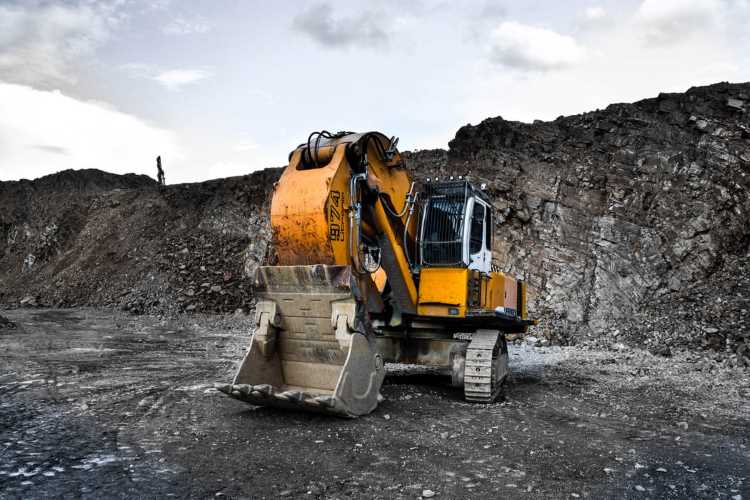
The Indian economy seems to have lost its way before realising its full potential. Multiple commentators have acknowledged that the twenty-first century will be an Indian century, but the country is currently facing one of the worst economic crises since independence. Key macroeconomic indicators such as GDP growth, employment, industrial output are pointing towards a deep-rooted malice in the economy. The situation warrants a paradigm shift in policy making that will entail evolving a holistic approach by breaking multiple silos. Unfortunately, the attempts to revive economic growth rely on patchworks, not on a systemic thought process.
At the centre of the crisis is a slowdown in demand and investment that has affected the economy’s ability to create jobs. The trade tension between the US and China was seen as an opportunity for India to become a global manufacturing hub as it was expected to attract multinational firms that were looking to get out of China. But the crisis saw smaller countries such as Vietnam and Bangladesh making the most of the opportunities. It is widely accepted that India needs a course correction to realise its huge potential to become a global economic powerhouse.
What derailed India’s growth story?
The successive governments failed to bring in long-term policy reforms to sustain high growth rates and instead went for knee-jerk reactions to the various issues that threatened growth. While the ad hoc policy measures seemed to solve the problems they just swept the symptoms under the carpet. Putting the India story back on track is not just the need of the government or the ruling party. It is equally important for the opposition parties, the industrialists, the common man and the youth to see that the country achieves its growth potential. There is a need to go back to the drawing board and approach the development issues with a fresh holistic approach as the knee-jerk solutions have dented the country’s growth prospects.
Every crisis should be seen as an opportunity. The attempt is an opportunity to find solutions that will put India on the path of long-term sustainable growth. This is the opportunity to usher in holistic policy reforms, ensuring a paradigm shift from the current approach. The new approach will not only help the country achieve its short-term goals, but also put it on track to attain sustainable economic growth with equity.
Mining industry in India
Mining industry’s contribution to the GDP is in the range of 2.2-2.5% and any decision-making paralysis in this sector will have a bearing on a large number of user industries. There is a need to take a relook at the sectoral policies and work out a time-bound plan to avoid crises in future.
The biggest challenge has been an impression that mining disturbs the environment. Modern technology has brought down the environmental impact of mining. The mining scandals that stalled decision making have been more of an issue of interpretation.
The new policy of the government is auctioning of mines, instead of the old allocation route. This is causing delays and decision-making paralysis. There is a need is to have strict timelines for conducting the auctions so that at every stage, there are sufficient lease rights to meet the requirement of minerals, especially coal and iron ore. Currently it takes around 3-4 years for miners to get all clearances including those related to environment. There is also a need to do away with the requirement of fresh environmental clearances when the lease changes hands due to auction or defaults.
Coal mining
India has the fifth largest coal reserves in the world, and is the fourth largest producer, producing 662.79 million tonne in 2016–17. As on March 31, 2017, India had 315.14 billion tonne of the resource. The estimated total reserves of lignite as on March 31, 2017 was 44.70 billion metric tonne. Due to high demand and poor average quality, India is forced to import high quality coal to meet the requirements of the steel industry. India’s coal imports have risen from 49.79 million tonne in 2007–08 to 190.95 million tonne in 2016–17. India’s coal exports rose from 1.63 million tonne in 2007–08 to 2.44 million tonne in 2012–13, but subsequently declined to 1.77 million metric tonne in 2016–17.
The delay in sealing the contracts has resulted in a dip in the production. Coking coal imports have been flat around 47 million tonne. Thus, we have a situation where imports are growing in double digits despite having huge thermal coal deposits, impacting employment opportunities and trade balance.
Issues in coal mining
One of the most challenging issues in India’s mining sector is the lack of assessment of India’s natural resources. The coal mining was nationalised in phases – coking coal mines in 1971–72 and non-coking coal mines in 1973. With the enactment of the Coal Mines (Nationalization) Act, 1973, all coal mines in India were nationalized on 1 May 1973. This policy was reversed four decades later. In March 2015, the government permitted private companies to mine coal for their own cement, steel, power or aluminium plants. The Coking Coal Mines (Nationalization) Act, 1972 and the Coal Mines (Nationalization) Act, 1973 were repealed on 8 January 2018. In the final step toward denationalization, on 20 February 2018, the government permitted private firms to enter the commercial coal mining industry. Under the new policy, mines will be auctioned to the firm offering the highest price. The move broke the monopoly Coal India Ltd enjoyed since nationalisation in 1973.
The need of the day is to put the auction process in place for coal and to have stability in policy. Free and uninterrupted flow of coal is key to the development of a strong manufacturing industry in the country.
Environment clearances
The state foresees a huge disruption in the sector in the next few years if requisite environment clearances aren’t prompt.
Initiation of auction of coal mines
The ministry of coal has started the process of auctioning 27 coal mines and allocating 15 mines to developers. The previous attempts elicited very poor response from the bidders. Auction is open to private and public sector undertakings. Six of the mines are for steel sector.
Coking coal mines
India imports 45 million tonne coking coal and it is important to replace it with domestic production. Coking coal available in India has high ash content and thus it is important to attract technology and investment into washeries to bring down the ash content.
Iron ore mining
There is a 30% export duty on iron ore to discourage exports, while no export duty is levied on pallets. Iron ore production in India in 2018 topped 205 million tonne after a gap of eight years. The output reached 205.68 million tonne, mostly on increased production in Odisha. This is 1.55% higher than the 2017 output. The country produced 209.00 million tonne iron ore in 2010 at the height of the mineral boom before the clampdown on illegal mining by the Supreme Court. After that year, the country’s iron ore production started declining. For end users, the prevailing decision-making delays are of great concern. There is a need to ensure smooth transition without disrupting the supply when leases of 334 mines (49 operational and 245 non-operational) expire in March 2020. Delayed decision making will impact the steel sector that is performing well despite the current slowdown. Delay in auction process will disrupt production of nearly 60 MT of iron ore that will affect nearly 40MT of steel output.
Court directions and their impact
In calendar year 2018, iron ore production could have been better if India’s largest iron ore mining company National Mineral Development Corporation’s output from Donimalai mine in Karnataka was not halted due to issues with the government of Karnataka. Besides this incident, the Supreme Court order declining extension of the deadline for depositing the penalty imposed on mining lease holders for operating without necessary clearances in Odisha dealt a blow to several miners.
Minimum quantity production clause
To end cartelisation in commercial mining, it is equally important to have minimum production clause. “Directives should be given to the miners to produce up to environment clearance limits. At any rate, even if this is not possible, the concept of minimum production requirement, as is now being enforced in the case of new leases granted by auction, should also be imposed upon the miners,” stated PMAI in a representation to the ministry.
Need to rationalise royalties
Currently, miners are levied five royalties and there is a need to subsume all into one levy to be distributed between the Centre, states and district administrations to reduce red tapism. Royalty is the revenue required to be paid by the holder of mining lease for any mineral removed or consumed from the leased area at a rate specified in the MMDR Act. Royalty across the globe is 4% on an average, but in India it is 15%. Over and above the royalty, there is a District Mineral Fund, surcharge and GST. Once the regional exploration and the detailed exploration is concluded, the prospector undertakes the development and operation of the mine. For this activity, the prospector is required to obtain a mining lease which is generally granted for a period of 30 years, extendable for a further period of 20 years. In addition to the levies under the MMDR Act, a mine operator is also required to pay other fees and levies with regard to the use of forest land for mining operations under the Forest Conservation Act,1980 and the Indian Forest Act,1927. These are (i). Forest Tax: levied on forest produce removed from forest areas. The rate varies from state to state; (ii) Compensatory Afforestation Charges: these charges levied in order to undertake afforestation.
Broadly, the global mining royalty arrangements either profit based, ad-valorem based or unit based. (i)profit-based royalty is levied on the net cash flow or some measure of the profit of a mining project. (ii)ad valorem royalty is an output-based royalty that is levied as a percentage of the value of production. (iii)unit-based royalty is an output-based royalty that is levied as a set charge per physical unit of production of a mining project (gross royalty). Need is to make mining royalty regime in India in line with global practices to encourage global investments and modernization.
The resent ordinance amending the MMDR Act 2015 has brought in some hope to the industry. But the need to plug all the gaps through a holistic approach remains. Mining and user industries have a symbiotic relation. They together add nearly 3-4% of the GDP besides creating employment, bringing in new technologies and triggering infrastructure growth. India is blessed with minerals and thus, any policy should aim at optimising its usage to generate sustainable income source, appropriate skilling, developing logistics that is environment friendly and trigger value-addition.
Dr Aruna Sharma is a New Delhi-based development economist. She is a 1982-batch Indian Administrative Service officer. She retired as steel secretary in 2018.

